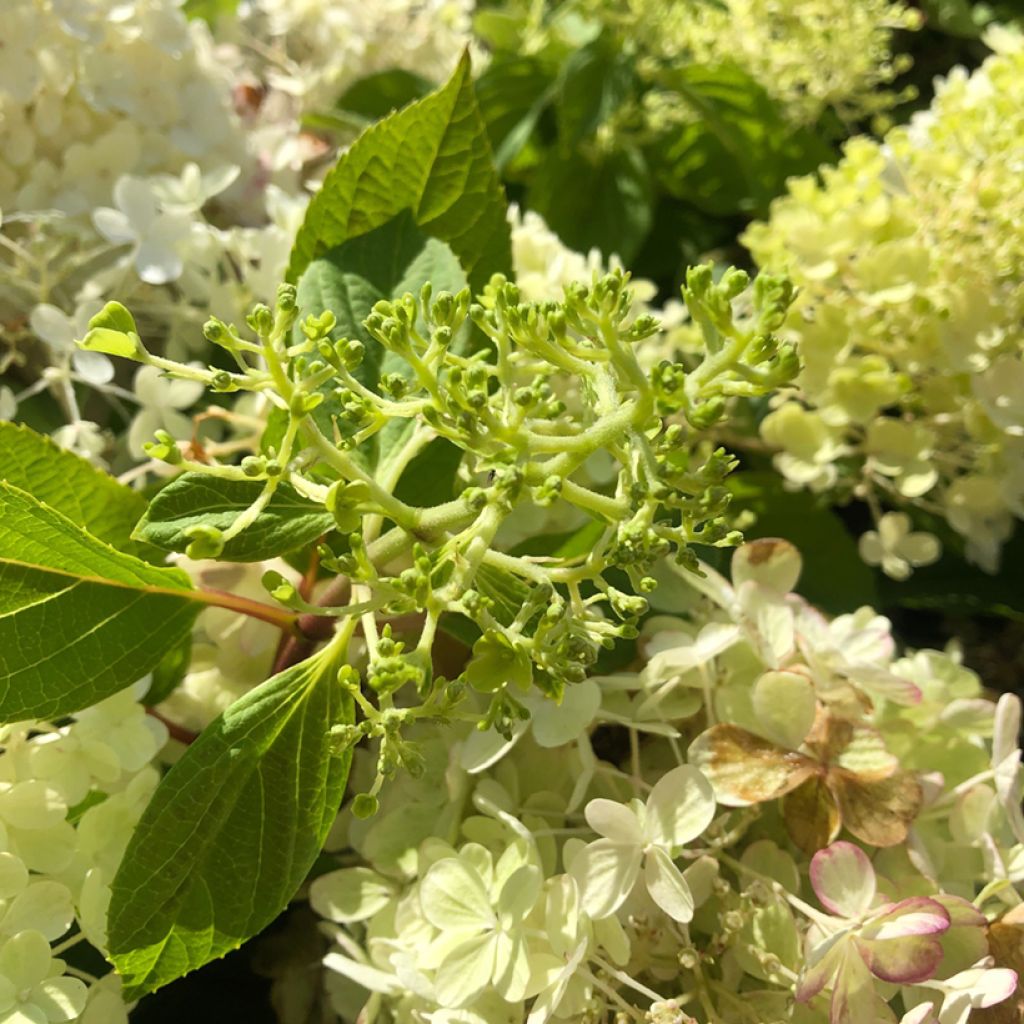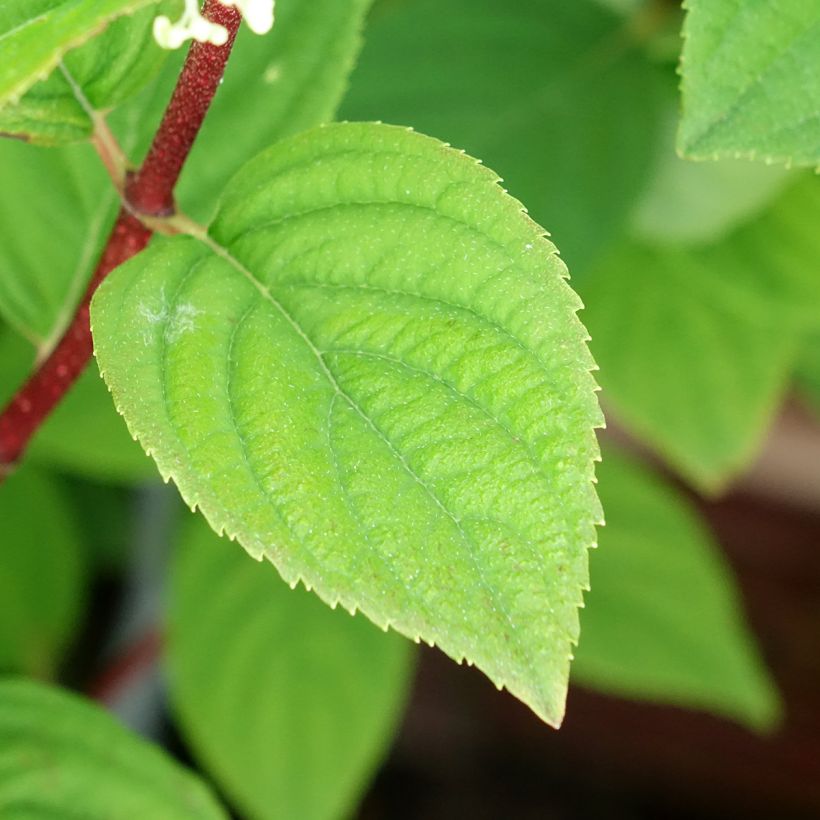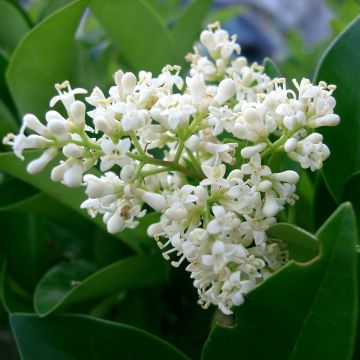

Hortensia paniculé nain - Hydrangea paniculata Fire Light Tidbit


Hydrangea paniculata Fire Light


Hortensia paniculé nain - Hydrangea paniculata Fire Light


Hortensia paniculé nain - Hydrangea paniculata Fire Light


Hortensia paniculé nain - Hydrangea paniculata Fire Light


Hortensia paniculé nain - Hydrangea paniculata Fire Light
Hydrangea paniculata Fire Light
Hydrangea paniculata Fire Light
Paniculate Hydrangea, Panicled Hydrangea, Panicle Hydrangea
A slightly rough start. I even thought my 2 young plants hadn't survived the wet winter. With patience, they have bounced back and, towards the end of the season, have produced beautiful panicles of flowers.
Nathy, 22/09/2024
Special offer!
Receive a €20 voucher for any order over €90 (excluding delivery costs, credit notes, and plastic-free options)!
1- Add your favorite plants to your cart.
2- Once you have reached €90, confirm your order (you can even choose the delivery date!).
3- As soon as your order is shipped, you will receive an email containing your voucher code, valid for 3 months (90 days).
Your voucher is unique and can only be used once, for any order with a minimum value of €20, excluding delivery costs.
Can be combined with other current offers, non-divisible and non-refundable.
Home or relay delivery (depending on size and destination)
Schedule delivery date,
and select date in basket
This plant carries a 24 months recovery warranty
More information
We guarantee the quality of our plants for a full growing cycle, and will replace at our expense any plant that fails to recover under normal climatic and planting conditions.
Would this plant suit my garden?
Set up your Plantfit profile →
Description
Hydrangea paniculata Fire Light is one of the most compact paniculate hydrangeas currently available in the horticultural trade. This does not prevent this small shrub from offering generous and long-lasting flowering, in a gradient of green, cream and raspberry-pink. Sturdy, with very strong stems that carry its well-proportioned panicles without weakening, this hydrangea is perfectly adapted to growing in large pots and is very useful for laying out small spaces. Its plump inflorescences bloom from late spring and almost completely cover the vegetation that nicely changes colours in autumn.
Hydrangea paniculata, also called Paniculate Hydrangea, is a particularly hardy species of hydrangea belonging to the Hydrangeaceae family, native to the leafy forests of China and Japan. It is easy to grow in any good garden soil that remains fresh.
The Fire Light 'Tidbit' variety, recently introduced on the market, was obtained in the United States by Tim Wood. The shrub shows a very reduced development; its main, thick branches remain upright under the weight of the flowers. At maturity, this variety will reach about 75 cm (29.5 in) in height and 90 cm (35.4 in) in spread. From mid-June, many conical, dense flower panicles bloom on the branches of the year; these are more rounded than those of other H. paniculata. They mainly contain fertile, single florets, quickly evolving from a green to greenish-cream shade towards increasingly bright pink. From spring, the branches bear finely dentate, ovate leaves of a fairly light green colour. They become more or less orange and purple before disappearing in winter. Paniculate hydrangeas are less sensitive to late frosts, as the majority of them bloom on the shoots of the year. This variety will withstand -20 °C, or even below.
Hydrangea paniculata Fire Light distinguishes itself from its cousins, the large-leaved hydrangeas (Hydrangea macrophylla), by its good tolerance to sun and sea spray and it copes with a slightly less humid soil. Installed in any good garden soil without too much limestone, in a few seasons 'Fire Light' forms a neat-looking bush that is laden with flowers for three months. Install it on its own, in a low hedge or in a bed, or even in clear undergrowth, mixed with other hydrangeas and perpetual roses to play with contrasts and shapes. You can also combine it with grasses like Miscanthus, Panicum virgatum Squaw and Stipa. Its small size allows it to be incorporated without hesitation into a small garden and to grow without difficulty in a large pot on the terrace, where it will live for many years with the addition of fertiliser and regular watering.
Report an error about the product description
Hydrangea paniculata Fire Light in pictures






Plant habit
Flowering
Foliage
Botanical data
Hydrangea
paniculata
Fire Light
Hydrangeaceae
Paniculate Hydrangea, Panicled Hydrangea, Panicle Hydrangea
Cultivar or hybrid
Planting and care
Hydrangea paniculata Fire Light is not fussy about the nature of the soil, as long as it is not too heavy, chalky or dry. It requires a sunny, non-scorching or semi-shaded exposure. When planting, install it in a deeply worked soil. A good base fertiliser (horn or dried blood) will promote the recovery of your plant and nourish it without risk of scorching. If your soil is dry, mix compost and potting soil into the ground, refill the planting hole and provide a surface watering basin. Mulch in summer to save on watering.
At the end of summer, we advise you not to cut the dry panicles that will protect the terminal shoots of the branches in winter; you should cut all the dry flowers at the end of February or on the first summer days. The plant's spring vegetation appears rather late.
Hydrangea paniculata should be pruned at the end of winter to produce more inflorescences and keep a dense habit. Apart from deliberately limiting the expansion of the bush if it has become too large, you should be careful not to remove the two-year-old branches, as doing so will compromise the development of the plant.
Hydrangea paniculata is more resistant to a relative lack of water and easily establishes itself even in non-acidic soil. It blooms generously from June until the first frosts. When planted in the sun, its inflorescences change colour in the autumn.
Planting period
Intended location
Care
-
, onOrder confirmed
Reply from on Promesse de fleurs
Similar products
Haven't found what you were looking for?
Hardiness is the lowest winter temperature a plant can endure without suffering serious damage or even dying. However, hardiness is affected by location (a sheltered area, such as a patio), protection (winter cover) and soil type (hardiness is improved by well-drained soil).

Photo Sharing Terms & Conditions
In order to encourage gardeners to interact and share their experiences, Promesse de fleurs offers various media enabling content to be uploaded onto its Site - in particular via the ‘Photo sharing’ module.
The User agrees to refrain from:
- Posting any content that is illegal, prejudicial, insulting, racist, inciteful to hatred, revisionist, contrary to public decency, that infringes on privacy or on the privacy rights of third parties, in particular the publicity rights of persons and goods, intellectual property rights, or the right to privacy.
- Submitting content on behalf of a third party;
- Impersonate the identity of a third party and/or publish any personal information about a third party;
In general, the User undertakes to refrain from any unethical behaviour.
All Content (in particular text, comments, files, images, photos, videos, creative works, etc.), which may be subject to property or intellectual property rights, image or other private rights, shall remain the property of the User, subject to the limited rights granted by the terms of the licence granted by Promesse de fleurs as stated below. Users are at liberty to publish or not to publish such Content on the Site, notably via the ‘Photo Sharing’ facility, and accept that this Content shall be made public and freely accessible, notably on the Internet.
Users further acknowledge, undertake to have ,and guarantee that they hold all necessary rights and permissions to publish such material on the Site, in particular with regard to the legislation in force pertaining to any privacy, property, intellectual property, image, or contractual rights, or rights of any other nature. By publishing such Content on the Site, Users acknowledge accepting full liability as publishers of the Content within the meaning of the law, and grant Promesse de fleurs, free of charge, an inclusive, worldwide licence for the said Content for the entire duration of its publication, including all reproduction, representation, up/downloading, displaying, performing, transmission, and storage rights.
Users also grant permission for their name to be linked to the Content and accept that this link may not always be made available.
By engaging in posting material, Users consent to their Content becoming automatically accessible on the Internet, in particular on other sites and/or blogs and/or web pages of the Promesse de fleurs site, including in particular social pages and the Promesse de fleurs catalogue.
Users may secure the removal of entrusted content free of charge by issuing a simple request via our contact form.
The flowering period indicated on our website applies to countries and regions located in USDA zone 8 (France, the United Kingdom, Ireland, the Netherlands, etc.)
It will vary according to where you live:
- In zones 9 to 10 (Italy, Spain, Greece, etc.), flowering will occur about 2 to 4 weeks earlier.
- In zones 6 to 7 (Germany, Poland, Slovenia, and lower mountainous regions), flowering will be delayed by 2 to 3 weeks.
- In zone 5 (Central Europe, Scandinavia), blooming will be delayed by 3 to 5 weeks.
In temperate climates, pruning of spring-flowering shrubs (forsythia, spireas, etc.) should be done just after flowering.
Pruning of summer-flowering shrubs (Indian Lilac, Perovskia, etc.) can be done in winter or spring.
In cold regions as well as with frost-sensitive plants, avoid pruning too early when severe frosts may still occur.
The planting period indicated on our website applies to countries and regions located in USDA zone 8 (France, United Kingdom, Ireland, Netherlands).
It will vary according to where you live:
- In Mediterranean zones (Marseille, Madrid, Milan, etc.), autumn and winter are the best planting periods.
- In continental zones (Strasbourg, Munich, Vienna, etc.), delay planting by 2 to 3 weeks in spring and bring it forward by 2 to 4 weeks in autumn.
- In mountainous regions (the Alps, Pyrenees, Carpathians, etc.), it is best to plant in late spring (May-June) or late summer (August-September).
The harvesting period indicated on our website applies to countries and regions in USDA zone 8 (France, England, Ireland, the Netherlands).
In colder areas (Scandinavia, Poland, Austria...) fruit and vegetable harvests are likely to be delayed by 3-4 weeks.
In warmer areas (Italy, Spain, Greece, etc.), harvesting will probably take place earlier, depending on weather conditions.
The sowing periods indicated on our website apply to countries and regions within USDA Zone 8 (France, UK, Ireland, Netherlands).
In colder areas (Scandinavia, Poland, Austria...), delay any outdoor sowing by 3-4 weeks, or sow under glass.
In warmer climes (Italy, Spain, Greece, etc.), bring outdoor sowing forward by a few weeks.








































